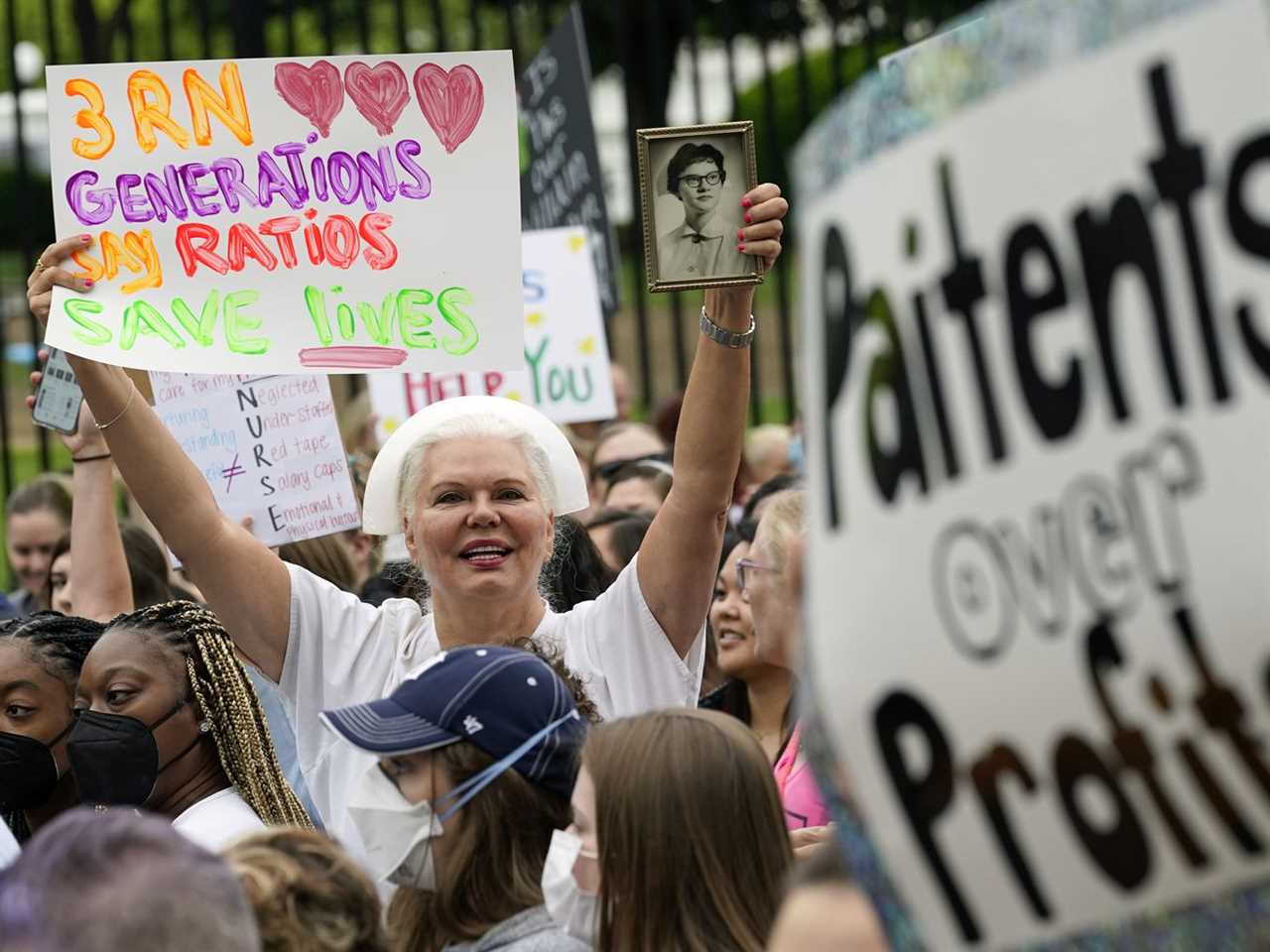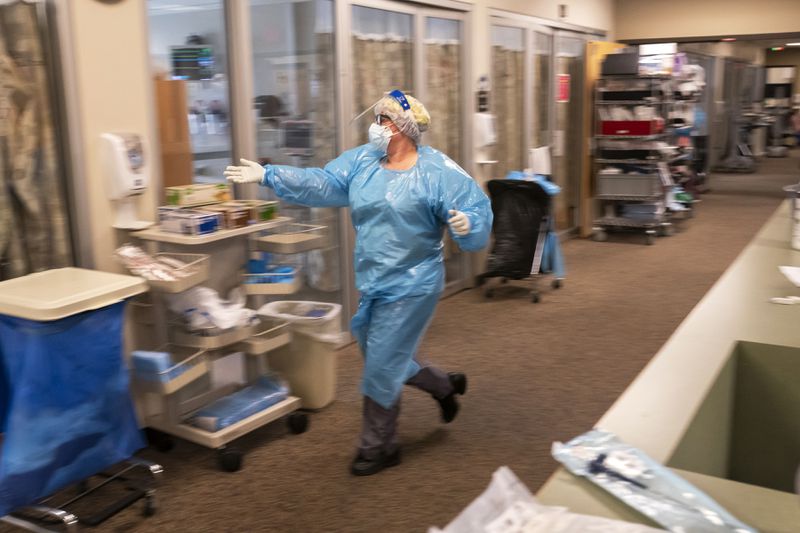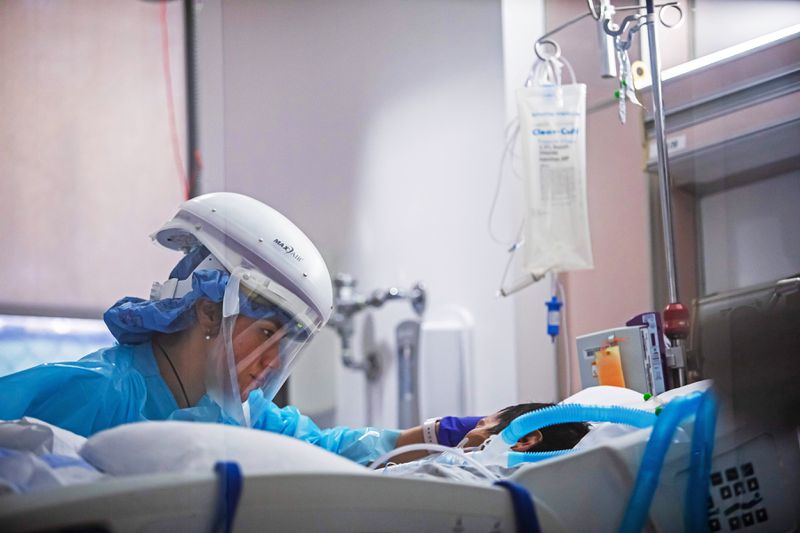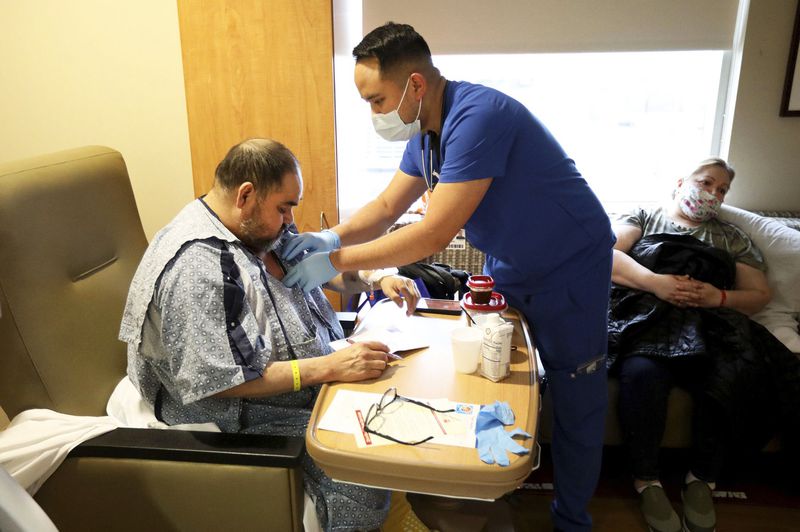
Hospitals don’t profit off having good nurses. That’s a big problem.
The pandemic made a long-simmering problem in hospitals impossible to ignore: We desperately depend on nurses to deliver quality health care, but the American health system does not properly value the work that they do — in the most literal sense.
Most US hospitals run under a fee-for-service system: They make money by billing for individual services. Doctors, in this universe, are a revenue generator. They order tests to be run, imaging to be taken, medication to be administered. They conduct surgeries and exams. The hospital can charge for each of those individual services, and patients see them on their bills.
Nurses are essential to each of those services. But because hospitals don’t bill insurers for the care that nurses provide to support a doctor’s orders, they end up on the other side of the balance sheet as a labor cost. Patients end up charged for nurses’ work in the same way they are for housekeeping or Jell-O, as part of the cost of a hospital room.
The work that they do — checking on patients, inserting an IV line, assessing patients for infections, teaching patients how to care for themselves — is not considered a billable service under the current fee-for-service payment model.
“All of that work is invisible, except for maybe the supplies that I used,” Matthew McHugh, professor of nursing at the University of Pennsylvania, told me. “The invisibility of nursing work, the inability to put a value on it ... is not in line with how any other kind of professional service would operate.”
This means hospital systems have an economic incentive to keep their nursing staff as small as possible. US hospitals, on average, employ fewer health care staff per capita compared to hospitals in other wealthy countries, most of which have universal health systems that do not rely upon fee-for-service reimbursement.
And when their finances become tight — such as when a global pandemic forces them to cancel moneymaking elective services — nursing and other labor costs are often targeted for cuts. That’s why US hospitals were furloughing nursing staff shortly before they became flooded by Covid-19 patients

Nathan Howard/Getty Images
But this failure to value nurses affected the quality of care that patients received before the pandemic, and will outlast it unless hospitals and policymakers decide to fix it.
“Until nurses are not an expensive labor cost for hospitals but are seen as revenue generators and as vanguards of quality, which they are, we’re going to keep having this problem,” said Betty Rambur, professor of nursing at the University of Rhode Island.
How US health care reimbursement ends up undervaluing nurses’ work
Fee-for-service — which generally means paying individually for every procedure that doctors perform, every test they order, and every drug they prescribe — actually takes a pretty limited view of what constitutes medical care. A lot of care is done before a doctor ever sees a patient.
When someone comes to a hospital with high fever and shortness of breath — a common set of symptoms during the pandemic — nurses go through a long checklist to make sure that patient is safe and ready to be seen by a doctor. They’ll check their airways and start an IV. They’ll draw blood from two different spots. They might have to put a catheter in so the patient’s urine can be collected. Then they have to enter that information into the hospital’s records system, to give the doctors a narrative about what is afflicting the patient.
All of that takes time — up to 30 minutes for an individual patient — and the nurses are racing against the clock. If a patient needs to be on antibiotics, the goal is to have them hooked up within two hours. But first, all of those tests and cultures, which the nurse is on the front line of administering, have to be conducted.
None of that nursing work is paid for in the same way a doctor’s work would be. Nurses acknowledge that the medical hierarchy exists for a reason, but they are also aware of the ways in which hospitals fail to value the work they are contributing to take care of patients.
“We’re not allowed to diagnose and we’re not allowed to charge for our services,” Andrea Riley, an ER nurse at Windham Community Hospital in Connecticut, told me. “Corporations ... don’t understand the physical work needed to carry out a doctor’s order.”
The big disconnect between good outcomes for patients and the bottom line for hospitals
Studies have consistently found a relationship between the number of nurses on a hospital’s staff and the quality of care that patients receive. Linda Aiken at the University of Pennsylvania and her colleagues have been studying this relationship for 20 years. Studies published in 2003 and 2014 indicated that higher staffing levels would lead to fewer deaths. A 2019 study that focused on patients in cardiac arrest demonstrated a similar effect.
A more recent paper from Aiken’s team analyzing hospitals in four US states, published in 2021 in Nursing Outlook, backed up those prior studies. They set out to study whether the kind of education nurses received mattered for patient outcomes. They found that it didn’t — but the sheer number of nurses who were employed at the hospital did.
And yet this association between more nurses and higher quality of care doesn’t seem to drive how hospitals staff their facilities. In fact, Riley told me it was typical for hospitals to plan for nurses to pick up extra shifts rather than hire more nursing staff to make sure their units have adequate support.
The problem is, the way the US health system pays for medical services generally doesn’t encourage hospitals to consider the link between nursing and care quality in their staffing decisions.

Ringo Chiu/AFP via Getty Images
Medicare, for example, lumps in nursing work with other “hospital services” for which facilities receive a flat per-discharge fee for inpatient hospital care. Those payments don’t treat a nurse who is treating patients with complex needs, such as somebody who’s on a ventilator or a dementia patient at high risk of a fall, any differently than another nurse with a patient who requires less constant attention.
In a sense, “you can’t blame hospitals,” Olga Yakusheva, professor of nursing at the University of Michigan, told me. They are simply responding to these economic incentives established in the way the United States pays for health care.
But what makes economic sense for hospitals and what’s best for patients are in opposition.
A paper published last year in Health Services Research by Yang Wang, who is a PhD candidate at Johns Hopkins School of Public Health, found that when hospitals have excess revenue because of higher prices paid by private insurers, they don’t end up spending that money on improving patient care, such as by hiring more nurses. Instead, most of the extra dollars went toward administrative spending and the hospital’s own surplus.
“The majority of the additional income was allocated primarily to services and programs that promoted hospital’s self-interest instead of patient benefit,” Wang wrote.
And when money is scarce and they need to make cuts, hospitals will put labor — read: nursing — costs on the chopping block first, Yakusheva said.
“That comes strictly from the economic foundation of how health care is being paid for,” she told me. “From the hospital’s perspective, there’s very little concern on what happens to patients. They get revenue from services they provide.”
The behavior of private equity firms after they acquire a hospital is telling. According to research published in April in Health Affairs, the financial performance of those hospitals improved after the acquisition because the cost to the facility for each discharged patient shrank and their profit margins grew.
But, to make their higher margins, these hospitals had cut their nursing staff by the equivalent of more than 10 full-time employees on average. The impact on the quality of care at those sites was beyond the scope of this particular study, but such findings are worrisome based on what we know about the relationship between nursing staff levels and clinical outcomes.
“Our results call attention to the tenuous relationship between financial performance and clinical quality,” the authors wrote, “where a boost in the former may result from structural changes that compromise the latter.”
Covid-19 laid that tension bare. Even as a deadly new virus was sweeping the nation and sending tens of thousands of Americans to the hospital and the ICU, dozens of hospital systems across the country were laying off staff members and putting nurses on furlough.
Nurses lived through the most difficult working conditions of their careers. “You’re just doing what you can to make sure your patient is still alive,” Riley said. “And you’re crying in your car, and this is happening every day.”

Apu Gomes/AFP via Getty Images
Many of them feel no more valued than they were before Covid-19. Cakes to celebrate “Nurses Week” don’t make much of a difference. They feel like their jobs are still on the line, based on metrics tied to the same reimbursement system that does not place an inherent value on their work. Pleas for more nurses and for more support continue to go unheeded.
“We’ve been screaming at the top of our lungs,” Riley said. “It falls on deaf ears on a daily basis.”
Fixing how the US pays for health care is not easy
US hospitals are invested in the system as it currently exists because they know how to make money off it. Most of the experts I spoke to thought changing how hospitals are paid for the care that they provide, in a way that does recognize the value of what nurses do, would be necessary to compel US hospital systems to rethink how they’ve done business for decades.
“If we want to get at the heart of this,” Rambur said, “we should make sure the resources that go to hospitals are actually directed toward the people who do the work.”
One concept that the US is already experimenting with would be value-based payments, predicated on the outcomes patients experienced instead of only the care they received. That would help create an economic incentive to invest in things like nursing that have proven to result in better outcomes. The federal government (through pilot programs like accountable care organizations) and private insurers (in their contracts with hospitals) are trying to start paying hospitals more based on the quality of care, not just the quantity.
The idea is that if a hospital’s patients are less likely to have complications or to be readmitted later for a related health problem, then the hospital deserves to be paid better. To make those benchmarks, hospitals would have good reason to invest in nurses, given what we know about the relationship between higher staffing levels and outcomes such as readmissions.
“The broader and the more pervasive value-based reimbursement becomes, the more hospitals will be in position to improve outcomes and reduce costs,” Yakusheva told me. “You have to invest in nursing because that’s where outcomes are coming from.”

Antonio Perez/Chicago Tribune/Tribune News Service via Getty Images
There are even more ambitious proposals out there, such as the idea that hospitals should be required to spend a certain amount of their revenue on nursing staff, Rambur said.
The National Academy of Medicine published a report in May 2021 outlining what the future of nursing might look like over the next 10 years and policies that could make the profession better. The authors named a number of possible payment reforms that could better value nurses’ work.
Their strongest recommendation was to move from fee-for-service to value-based payments. However, recognizing that the transition would take years, they also recommended reforms that could be made in the near term, such as allowing nurses to bill for telehealth services.
But change is going to be difficult. In Massachusetts in 2018, the state’s hospital industry campaigned hard against a ballot initiative that would have required the state’s hospitals to maintain certain nurse-to-patient staffing ratios, another potential solution to these issues. The transition to more value-based payment has been halting; though the ACA did initiate more experiments in how to actually do it, the majority of health care services in the US are still paid for on a fee-for-service basis.
Hospitals are protective of their bottom lines and, as is often pointed out among experts and industry insiders, every congressional district has a hospital as a major employer. They wield tremendous political influence that can squash major reform proposals.
But something has to change. Yakusheva and Rambur co-authored a JAMA article in August of 2020 that ended on a hopeful note: “Hospitals and nurses have an opportunity to use the Covid-19 pandemic experience to reset the hospital-nurse relationship.”
Time will tell whether they take advantage of it.
----------------------------------------
By: Dylan Scott
Title: When hospitals value nurses as much as jello
Sourced From: www.vox.com/policy-and-politics/23076581/us-covid-health-care-nurses-pay-salary
Published Date: Mon, 06 Jun 2022 12:30:00 +0000
Did you miss our previous article...
https://consumernewsnetwork.com/politics-us/how-biden-plans-to-handle-the-jan-6-hearings






